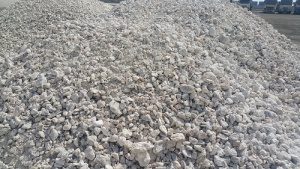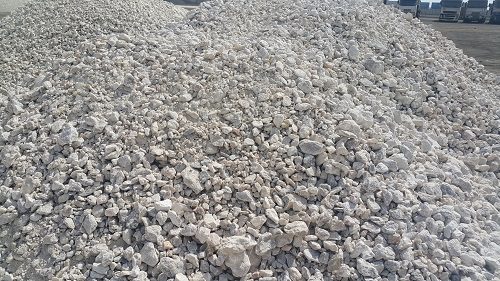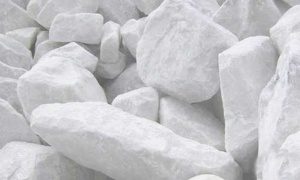What is gypsum?
Gypsum is a common sulfate mineral made of calcium sulfate. People have used it as a building material for a long time, possibly since the neolithic. Today, it is an ingredient of plaster of Paris. It can also be used as a fertilizer. It is softer than most minerals, with a value of 2 on the Mohs scale of mineral hardness. This mineral can be, somewhat, scratched with your fingernail. It is an ingredient of Portland cement.
Uses of Gypsum
Gypsum suppliers, us included at Azintrade, sell their gypsum for these uses: manufacture of wallboard, cement, plaster of Paris, soil conditioning, a hardening retarder in portland cement. Varieties of gypsum known as “satin spar” and “alabaster” are of use for a variety of ornamental purposes; however, their low hardness limits their durability. Gypsum has many other uses, too. In fact, its use as a filler ingredient in many foods is noticeable. The average person eats about 28 pounds of gypsum in a lifetime.
Interesting Facts
The largest deposit of gypsum in the world is White Sands National Monument in New Mexico. There over 275 square miles of shifting gypsum sand dunes cover the area. It was useful for Native Americans as long ago as 3000 years for the white pigments, which they used for decorating pottery, teepees, body paint, and shields. Egyptians used it as jointing material in the monuments they built over 5000 years ago.
Gypsum crystals can be extremely large – among the largest on the entire planet. A cave in Naica, Mexico contains crystals as large as 4 feet in diameter and 50 feet long.
In the early nineteenth century it was regarded as an almost miraculous fertilizer. American farmers were so anxious to acquire it that a lively smuggling trade with Nova Scotia evolved, resulting in the so-called “Plaster War” of 1812.
Orbital pictures from the Mars Reconnaissance Orbiter (MRO) indicate the existence of gypsum dunes in the northern polar region of Mars.
The #1d1d29 form of gypsum (selenite) was in use for windows before the invention of glass.
Gypsum Mining Companies in Iran
Gypsum production in Iran increased during last three decades. This mineral accounts for 10% of the country’s  mining activities each year (Iranian Statistical Center, 2006). Iran’s annual gypsum production is 13 million tons, which is 10% of the entire global output. Iran is second to the United States in production and supplies much of the world gypsum needed for construction and reconstruction in the Middle East. Main locations of gypsum deposits hence main gypsum suppliers are in center, west, north and south-western of Iran. Semnan, Qoum, Yazd and Khorasan are main gypsum producers’ provinces. These areas are the most important locality for gypsum occurrences, due to the high thickness of gypsum bed.
mining activities each year (Iranian Statistical Center, 2006). Iran’s annual gypsum production is 13 million tons, which is 10% of the entire global output. Iran is second to the United States in production and supplies much of the world gypsum needed for construction and reconstruction in the Middle East. Main locations of gypsum deposits hence main gypsum suppliers are in center, west, north and south-western of Iran. Semnan, Qoum, Yazd and Khorasan are main gypsum producers’ provinces. These areas are the most important locality for gypsum occurrences, due to the high thickness of gypsum bed.




